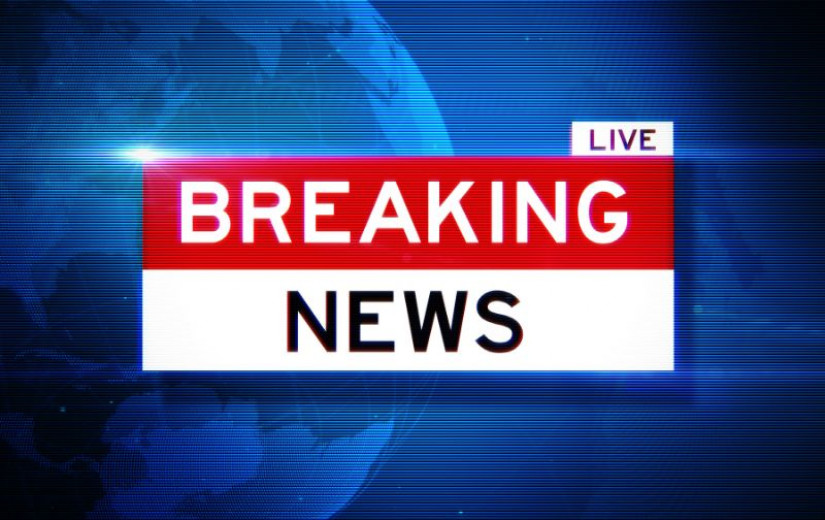
By Simon Watkins - Sep 15, 2025, 6:00 PM CDT
- Drones entered Poland just before the Zapad war games.
- Poland has moved 40,000 troops to its eastern border.
- Washington is gearing up to choke Russia’s Arctic LNG trade by sanctioning ports.

Whether or not the incursion of at least 19 Russian drones into Poland on the night of 9 September was deliberate or not, NATO’s response will provide the Kremlin with a clear indication of whether it can continue to escalate military aggression against its security members without meaningful consequences to it. This is particularly useful information for Moscow to know, as the four-yearly ‘Zapad’ joint Russia-Belarus military exercises began on 12 September and are due to end on the 16th of this month. The last time the exercises were held, they effectively formed the first phase of the Russian invasion of Ukraine in February 2022, with troops and equipment used in the 2021 Zapad kept in place after the drills had officially finished. This year’s Zapad will feature for the first time exercises surrounding the use of Russian nuclear weapons and nuclear-capable intermediate-range missiles. Poland – which has been ahead of the curve in identifying Russia’s deadly serious intention to invade a NATO member country within the next three to five years at most – is taking no chances, moving 40,000 of its troops to its eastern border with Belarus. For its part, the U.S. has begun its response by announcing further potential sanctions on Russia’s key liquefied natural gas (LNG) flows involving its crucial Arctic facilities.
A broad reason why Russia’s Arctic LNG projects are so important to it is the increasing importance of this form of gas to the global energy mix following Russia’s 2022 invasion of Ukraine. This resulted from the fact that, unlike energy moved through pipelines, LNG does not require years of negotiations and vast expense in building out a complex transportation infrastructure before it is ready to purchase and move. Instead, once gas has been converted to LNG, it can be shipped and moved anywhere within a matter of days and bought reliably either through short- or long-term contracts or immediately in the spot market. Consequently, after sanctions were eventually placed on Russia’s main oil and gas pipelines into Europe following the Ukraine invasion, LNG became -- and remains – the world’s most important swing energy source, as analysed in full in my latest book on the new global oil market order. This rising economic importance of LNG morphs into the second reason why Russia’s LNG business is so important to it, which is that it has replaced its oil and gas supplies as the new means by which it can build and exert power over its customers or, in the case of China, consolidate its position as a key ally of Beijing. The third reason for Arctic LNG’s importance to Russia is that the Kremlin intends for growth in its LNG business to increasingly offset the reduction of its oil and gas exports into key markets as a result of sanctions. According to Deputy Prime Minister Alexander Novak, Russia intends its LNG market share to rise to 20% (at least 100 million tons per year) by 2030, from the current 8% or so. According to the International Energy Agency, Russia’s share of the internationally traded natural gas market is forecast to fall from around 30% in the year before it invaded Ukraine to about 15% by 2030.
Related: China Continues to Amass Crude Oil in Storage
The fourth and final reasons why Russia’s Arctic LNG business is so important to it – and why Washington is so determined to effectively destroy it over the long term -- is that it is an industry so closely associated in Russia with President Vladimir Putin personally. He has long seen LNG – particularly from the country’s huge gas resources in the Arctic – as the key to Russia’s next major phase of energy growth, in a similar way to the way shale oil and gas have been for the U.S., as also detailed in my latest book on the new global oil market order. The Russian Arctic sector comprises over 35,700 billion cubic metres of natural gas and over 2,300 million metric tons of oil and condensate, the majority of which are in the Yamal and Gydan peninsulas, lying on the south side of the Kara Sea. According to comments by Putin, the next few years will witness a dramatic expansion in the extraction of these Arctic resources, and a corollary build-out of the Northern Sea Route (NSR). This coastal route that crosses the Kara Sea is the primary transport link to monetise these resources in the global oil and gas markets, especially with its key geopolitical and financial ally, China. Such was Putin’s determination to move ahead with Russia’s Arctic LNG projects that various heavyweight Russian entities were inveigled around the time the U.S. imposed its 2014 sanctions to finance key parts of them. The Russian Direct Investment Fund, for example, established a joint investment fund with the state-run Japan Bank for International Cooperation, with each contributing half of a total of about JPY100 billion (then US$890 million) to it. The Russian government itself bankrolled Arctic LNG 1 from the beginning with money from the state budget. It then supported it again when sanctions were introduced by selling bonds in Yamal LNG (the first part of the Arctic LNG programme), and then by providing another RUB150 billion of backstop funding from the National Welfare Fund.
Back in April last year, U.S. Assistant Secretary of State for Energy Resources Geoffrey Pyatt said: “[Russia’s] Novatek has recently had to suspend production at its Arctic LNG-2 liquefaction facility, in part because of sanctions that the Biden administration has led.” He added: “We’re going to keep tightening the screws […] We’re going to continue to designate a broad range of entities involved in development of other key energy projects, future energy projects as well, and associated infrastructure, including the Vostok Oil Project, the Ust Luga LNG Terminal, and the Yakutia Gas Project.” Despite the change of government since then, Washington has continued in the same vein. The 9 September incursion of Russian drones into Poland has added urgency to the ramping up of such measures, with Republican Senator Lindsey Graham calling for action on his ‘Sanctioning Russia Act of 2025’. This legislation is centred on the imposition of 500% duty on all goods or services imported into the U.S. from any country that -- according to the text of the bill -- “knowingly sells, supplies, transfers, or purchases oil, uranium, petroleum products, or petrochemical products that originated in the Russian Federation”. The bill currently has 84 listed co-sponsors in the U.S. Senate alone, according to the U.S. Congress website. The Speaker of the House has also indicated his chamber’s support to pass the bill. “We stand ready to pass legislation authorizing bone-crushing new sanctions and tariffs that can be deployed at your discretion,” Graham said in a 10 September post on X. Democrat Senator Richard Blumenthal, added that: “Military aid, in concert with bone-crushing sanctions on Russia and its customers, will send an unmistakable message to Putin: Ukraine and its allies will not balk in the face of adversity.”
New U.S. sanctions are likely to expand the targeting of ports, vessels (direct and shadow fleet), companies, financial networks, and individuals connected to Russia’s LNG trade, a very senior source connected to the European Union’s security complex exclusively told OilPrice.com last week. It would also involve additional targeting of vessels in Russia’s shadow fleet and firms associated with that trade, according to the Washington sources. These would significantly build on the swathe of new sanctions announced by the U.S. Treasury and State departments the day before last year’s 24 August commemoration day of Ukraine’s 1991 Declaration of Independence. The departments announced new measures targeting around 400 domestic and international individuals and entities, including LNG tankers of Russia’s shadow fleet of tankers used to circumvent existing sanctions. These included several tankers believed to have docked at Novatek’s 19.8 million metric tons per year capacity Arctic LNG 2 facility. The Treasury Department also further sanctioned Novatek’s China Holdings Co., which was established as a route to buyers in Asia. Additional direct and indirect sanctions were applied to slow the development of LNG projects that Russia aims to bring online as soon as possible, including at the Obsky LNG, Arctic LNG 1, Arctic LNG 2 and Arctic LNG 3 project sites. The U.S. Treasury also targeted another dozen or so financial and other support networks to Russia’s LNG trade, including its Arctic operations, which featured more than 100 persons and entities across 16 countries, including China, Switzerland, Turkey, and the United Arab Emirates. Much more of the same is coming very shortly, concluded the E.U. source.
By Simon Watkins for Oilprice.com
More Top Reads From Oilprice.com
- UK Pays Record Sums to Wind Power Generators to Switch Off
- Putin Extends Russian Oil Export Ban to Price Cap Countries Through 2025
- Trump’s Big Beautiful Bill Could Hurt His Own Energy Agenda

Simon Watkins
Simon Watkins is a former senior FX trader and salesman, financial journalist, and best-selling author. He was Head of Forex Institutional Sales and Trading for…











